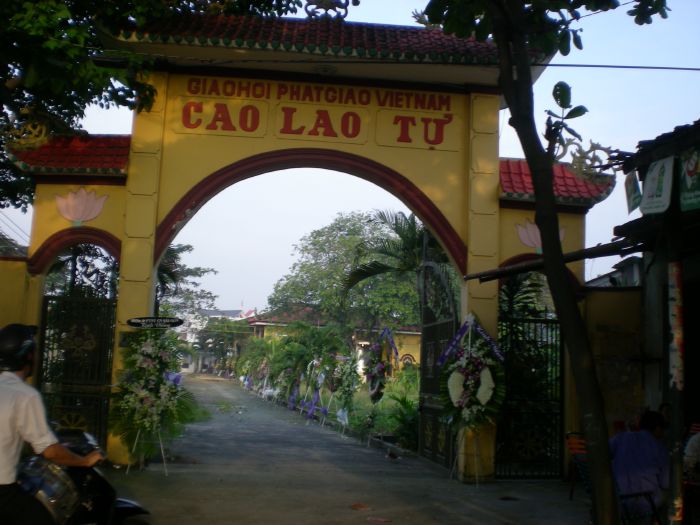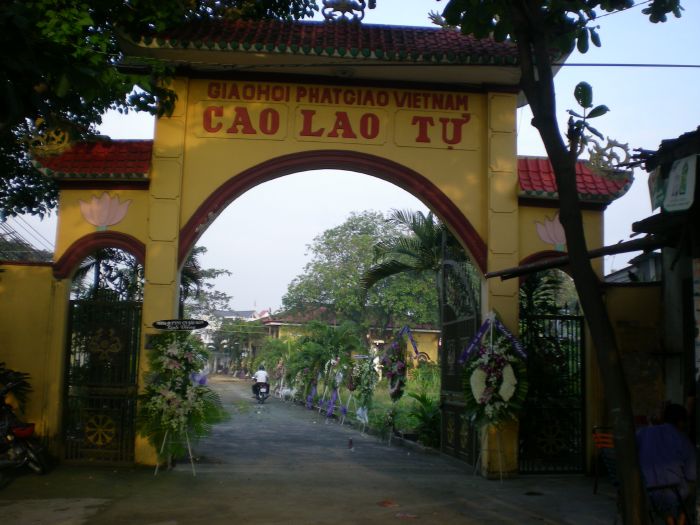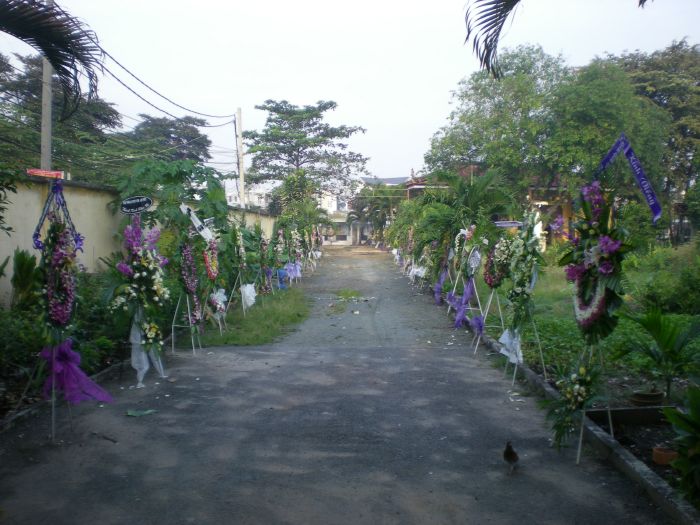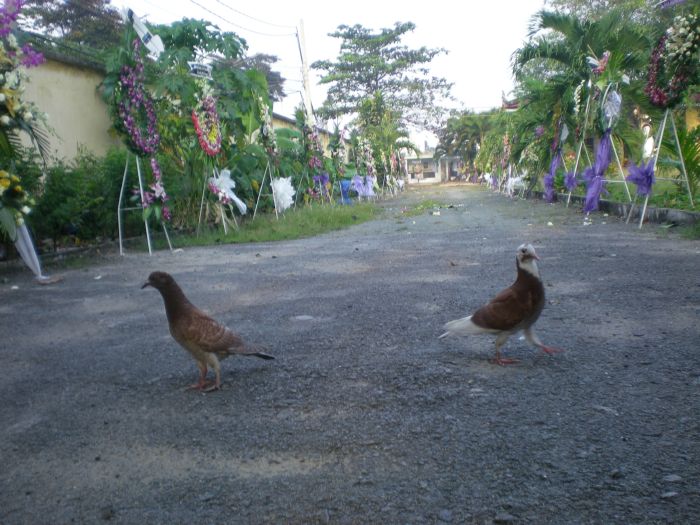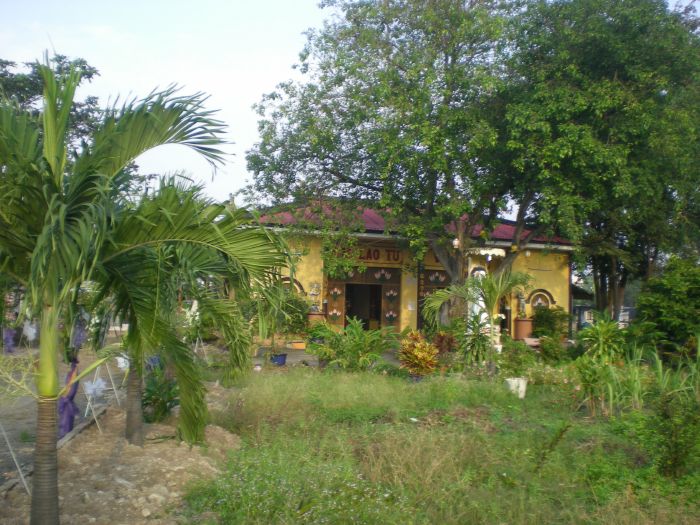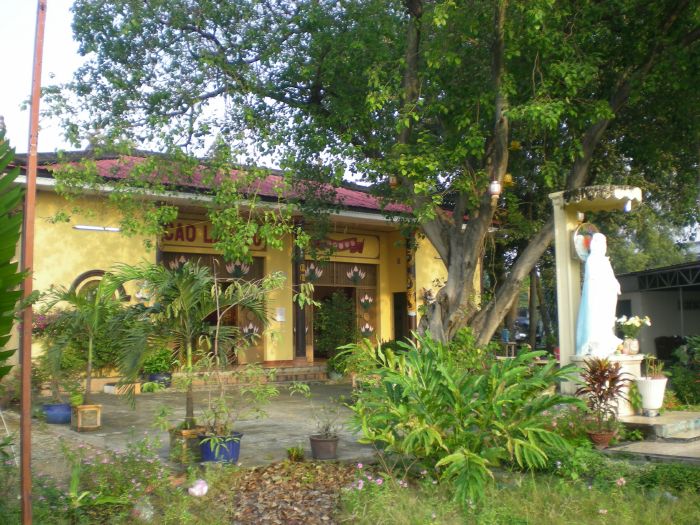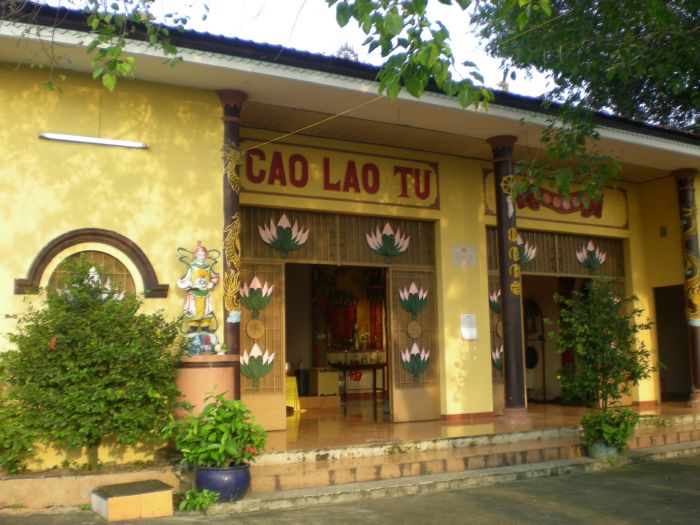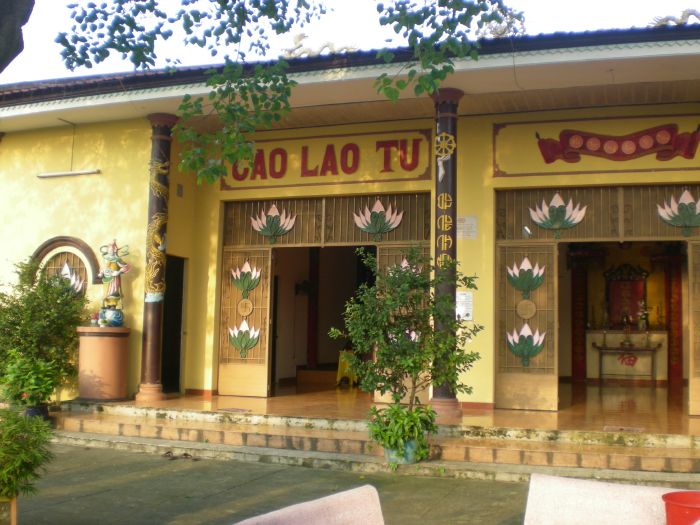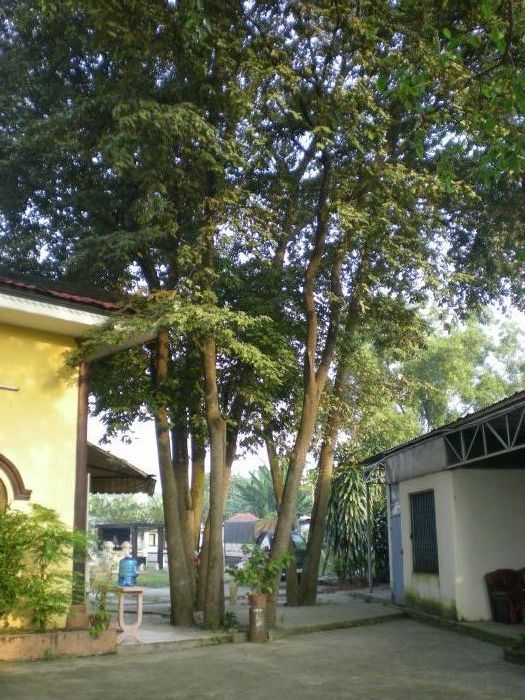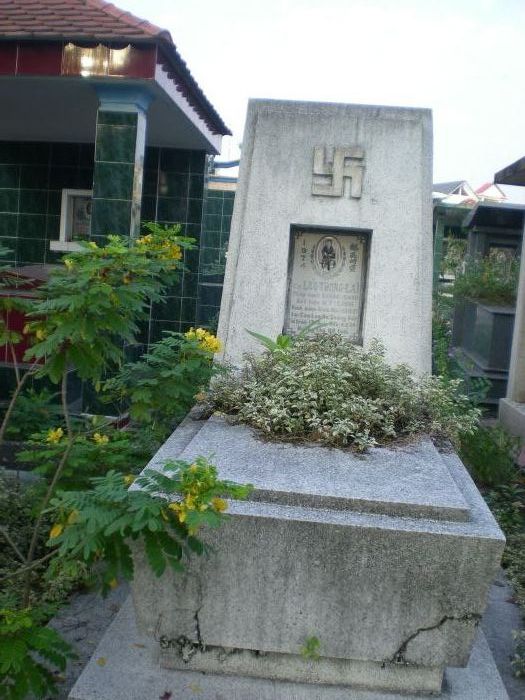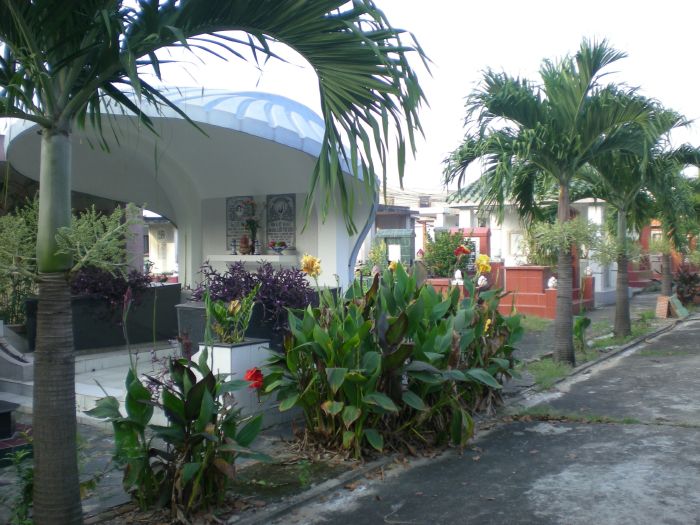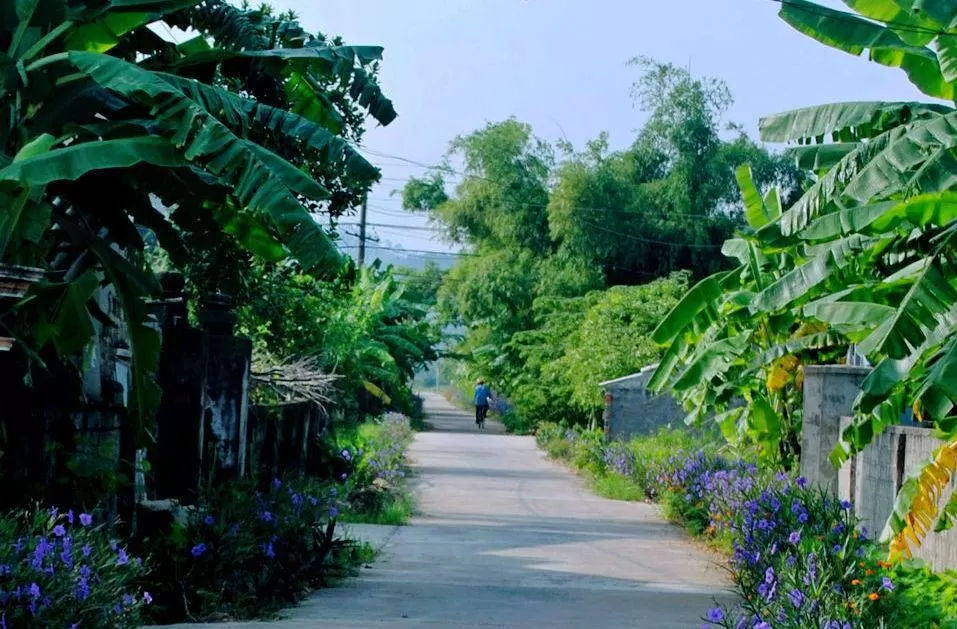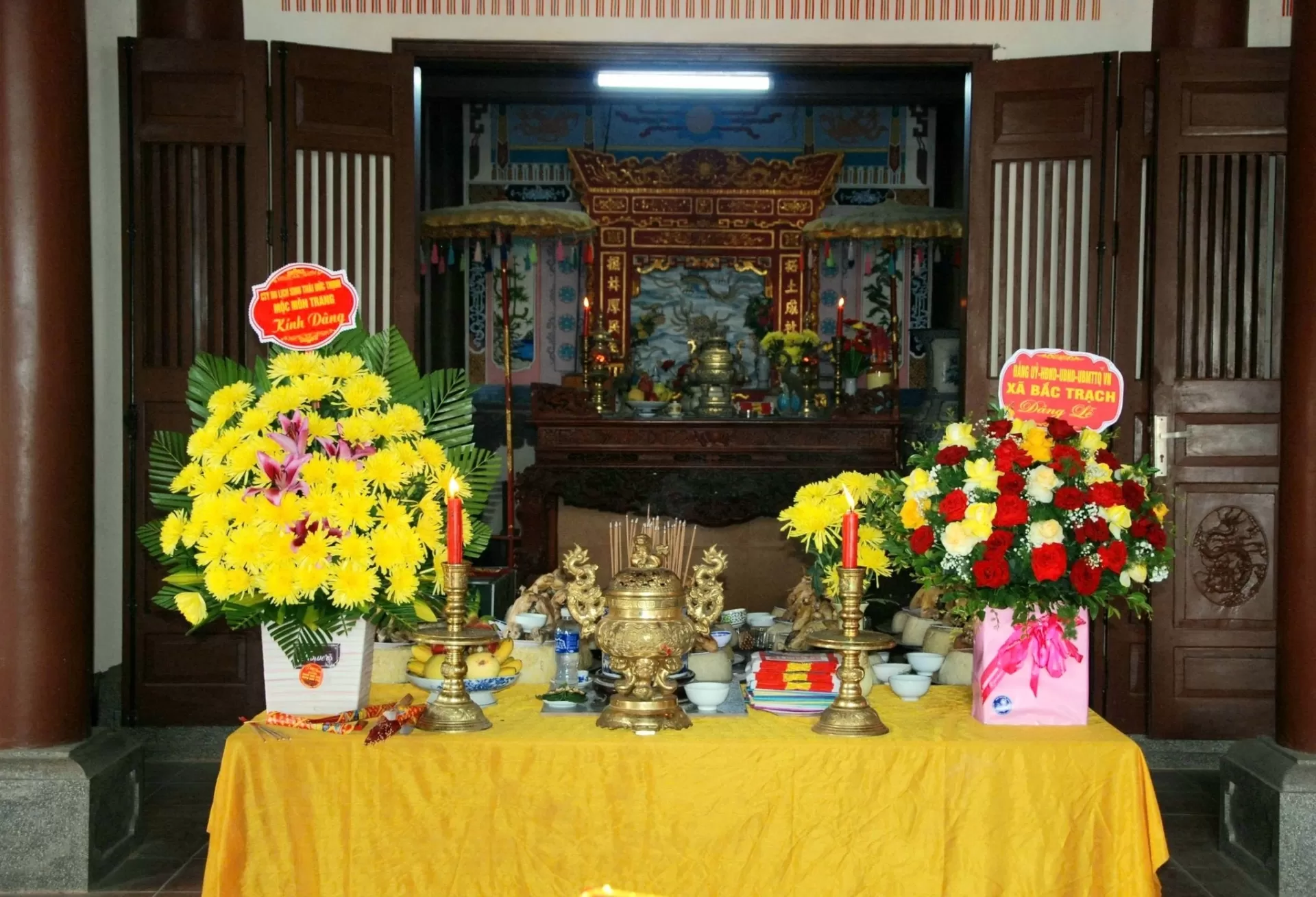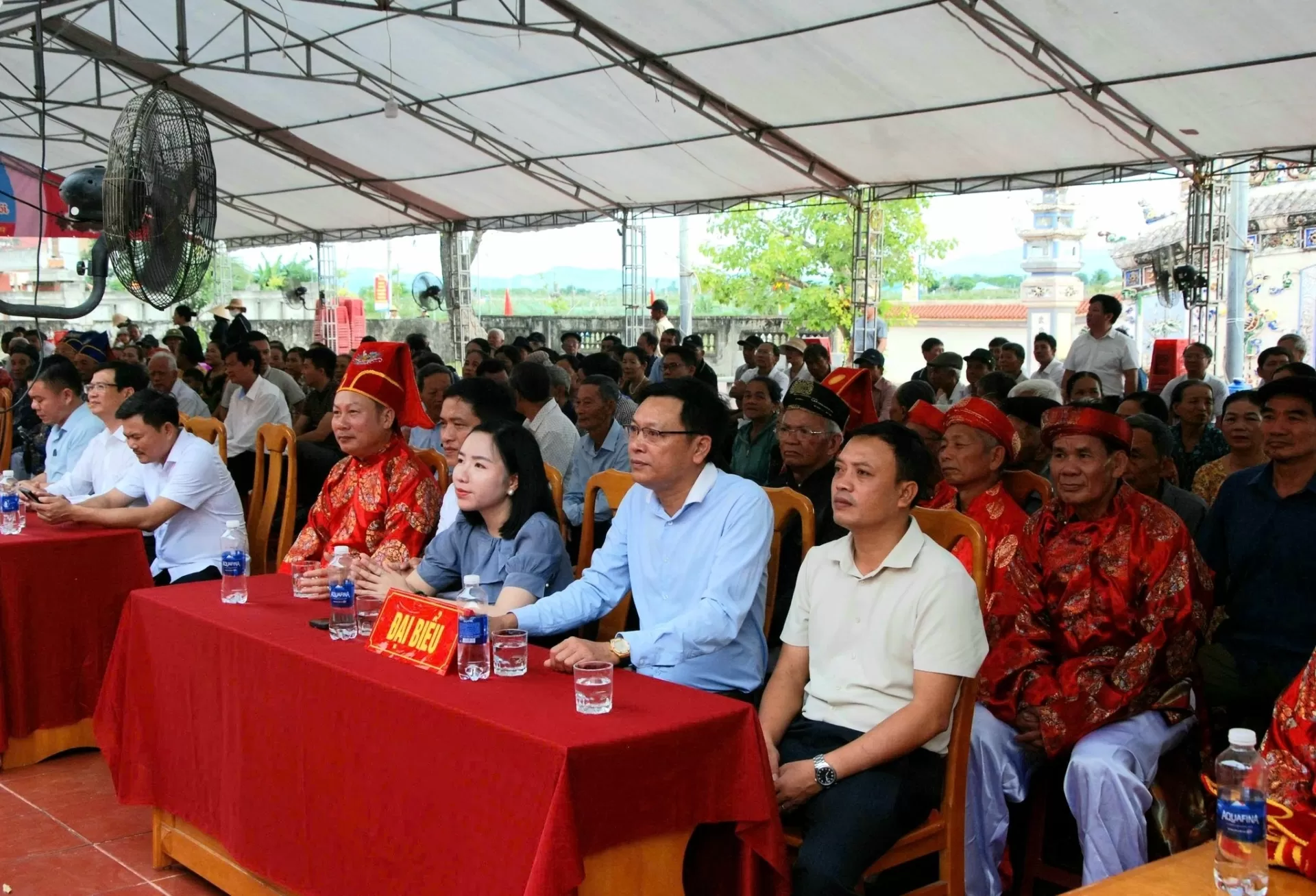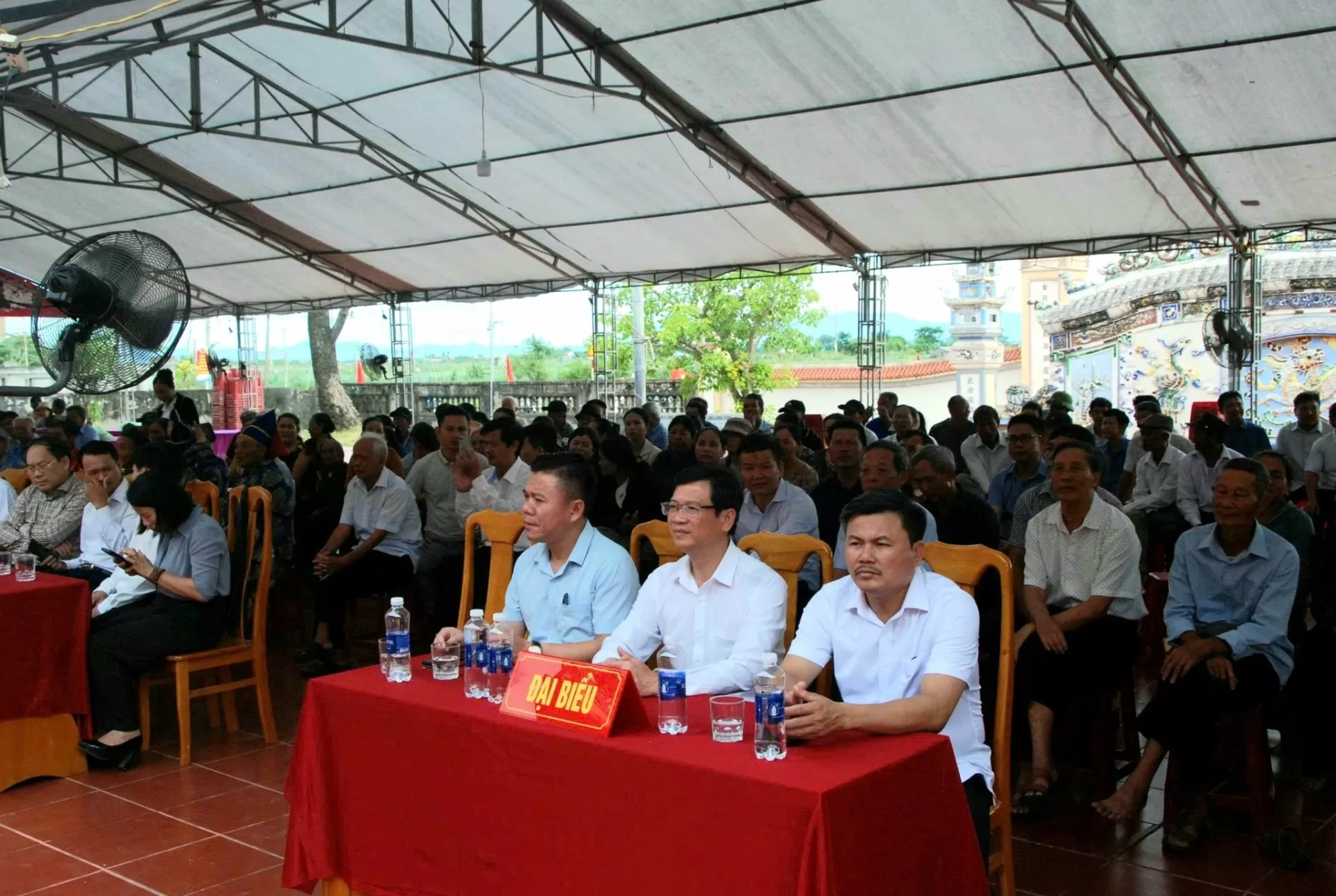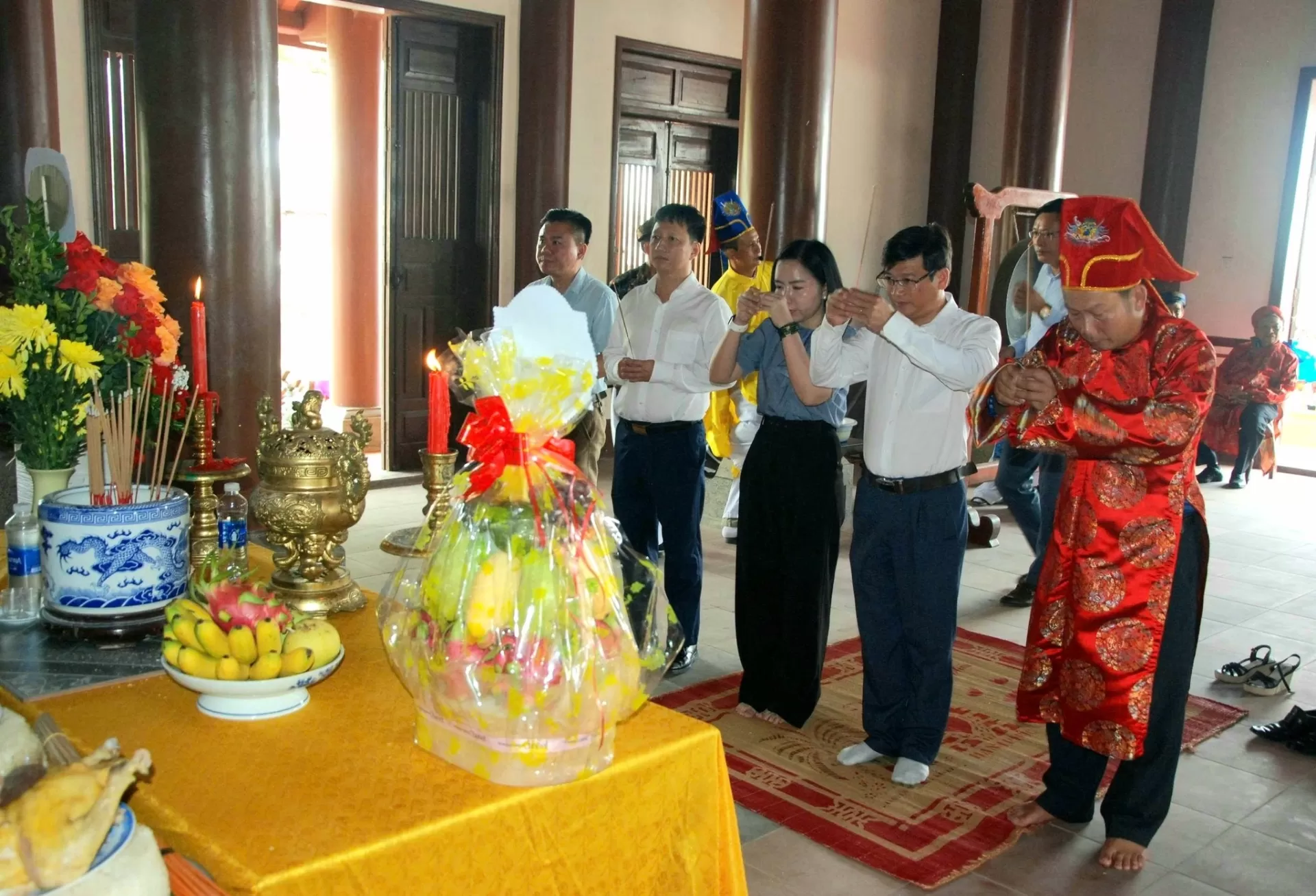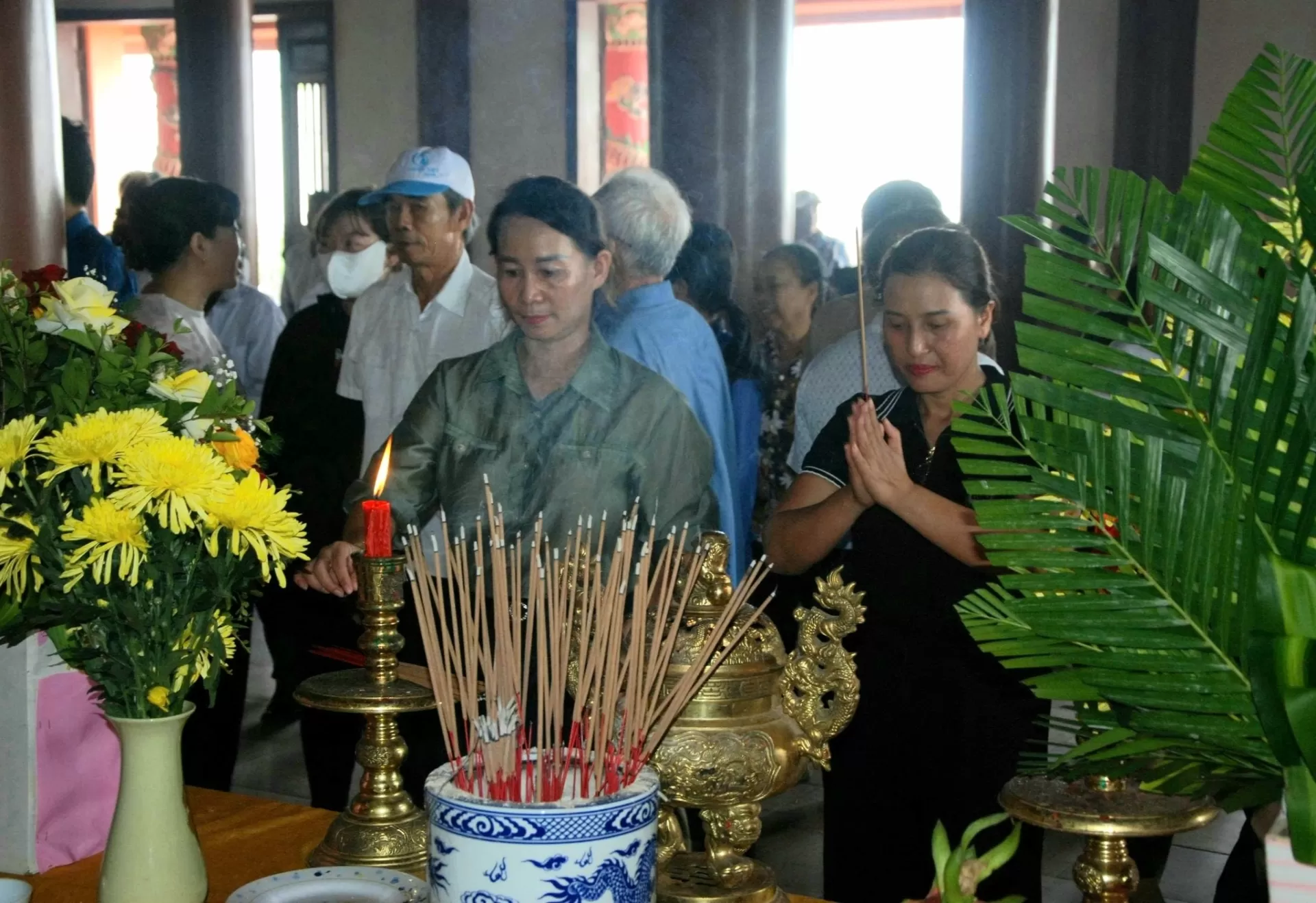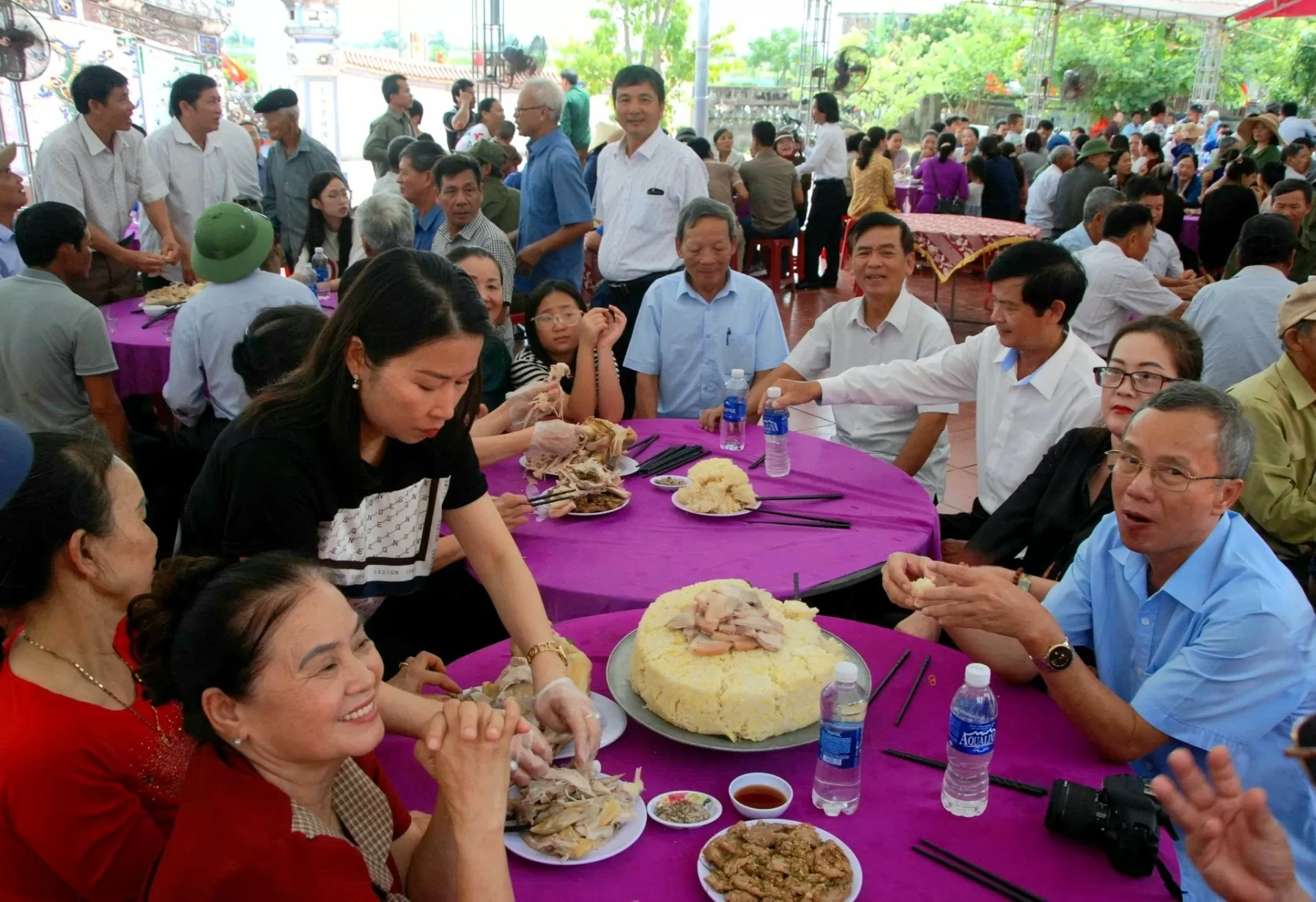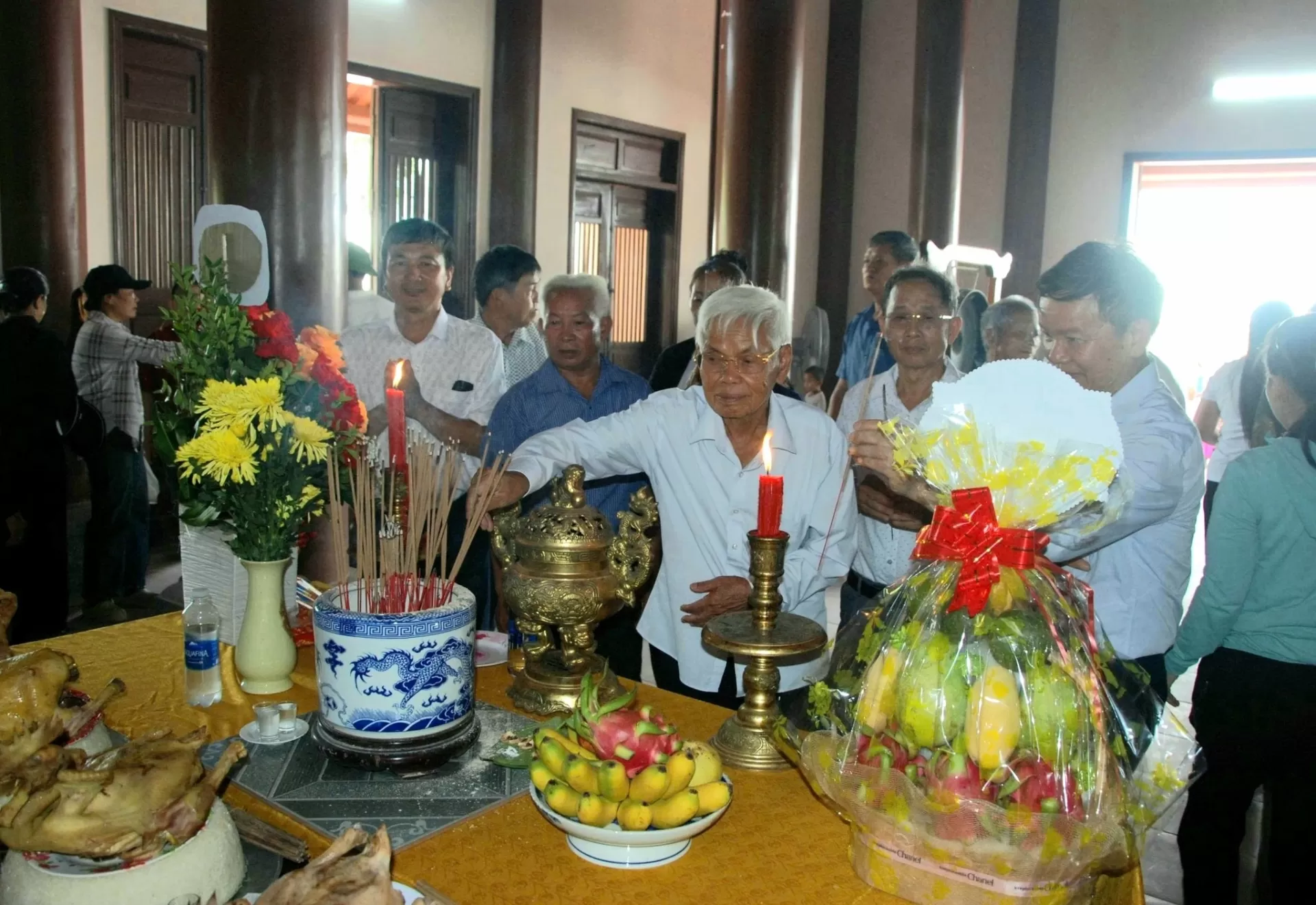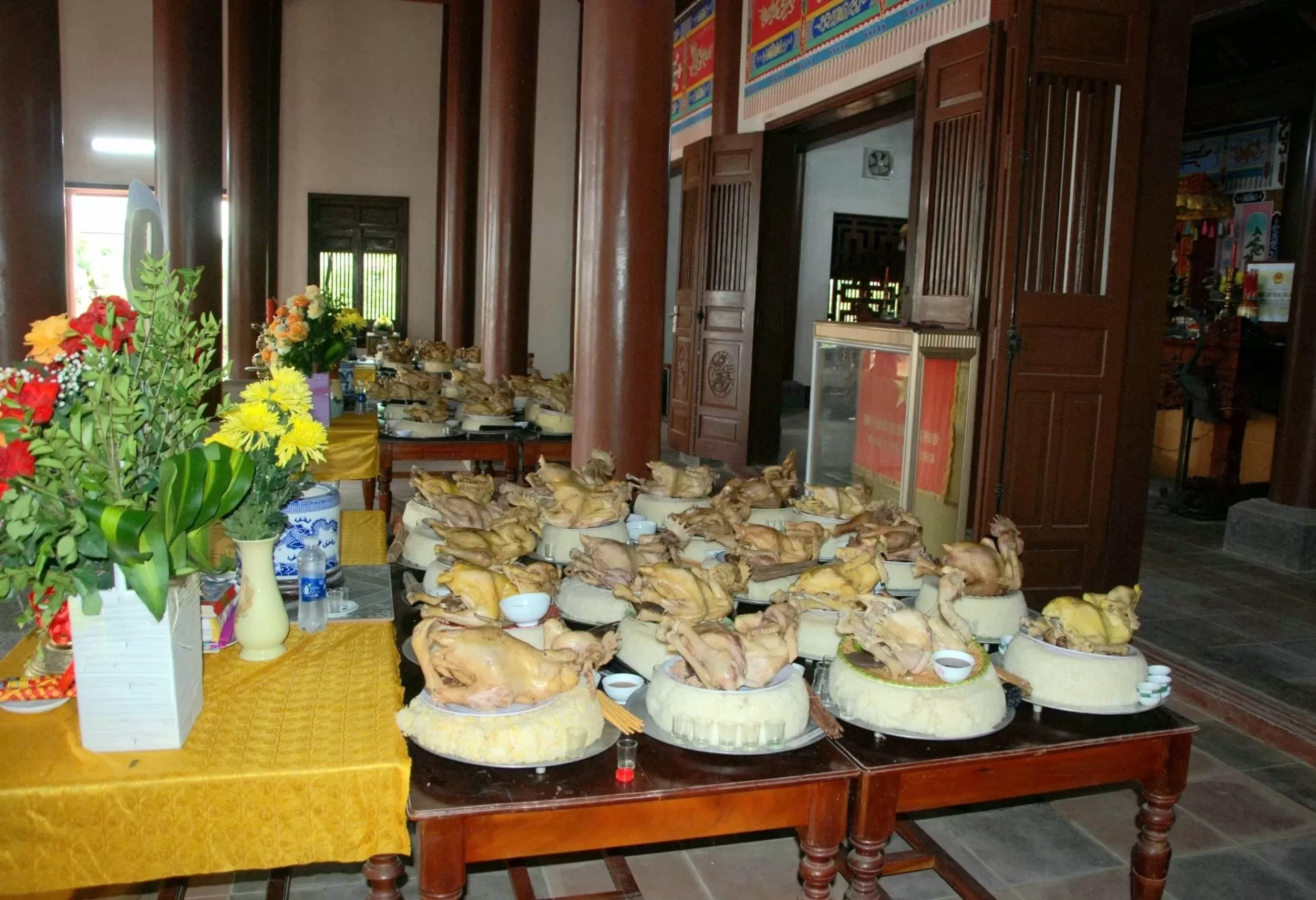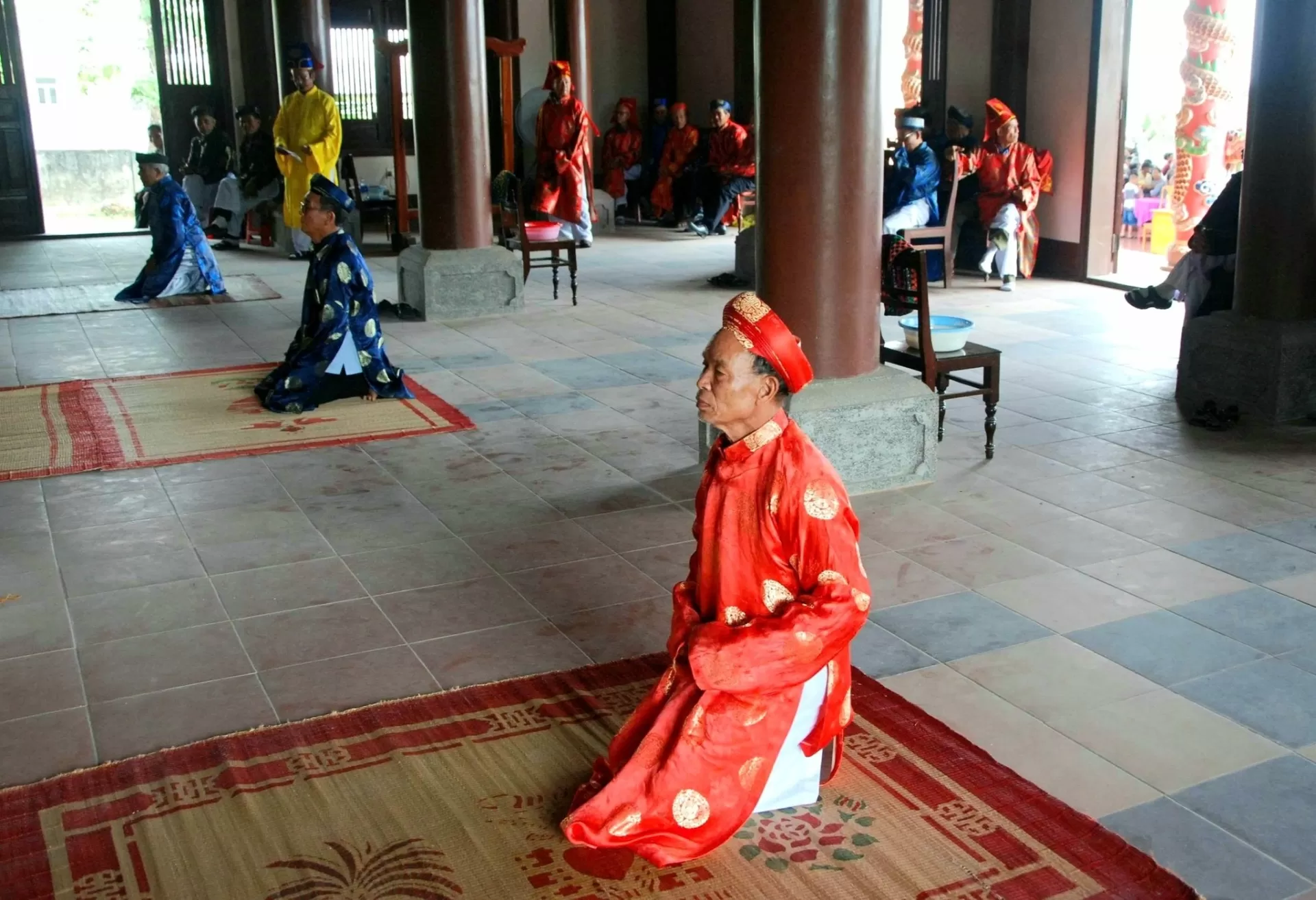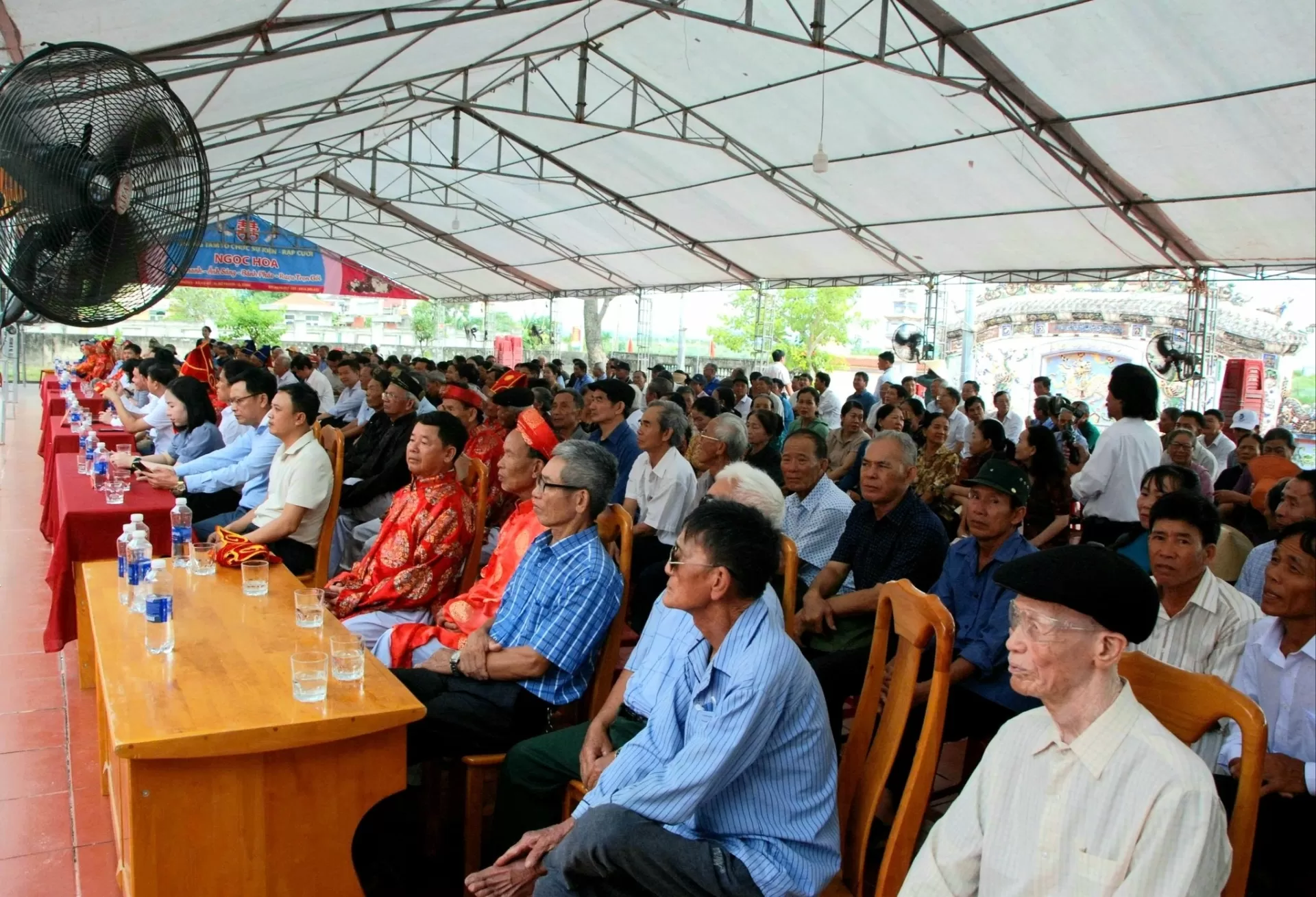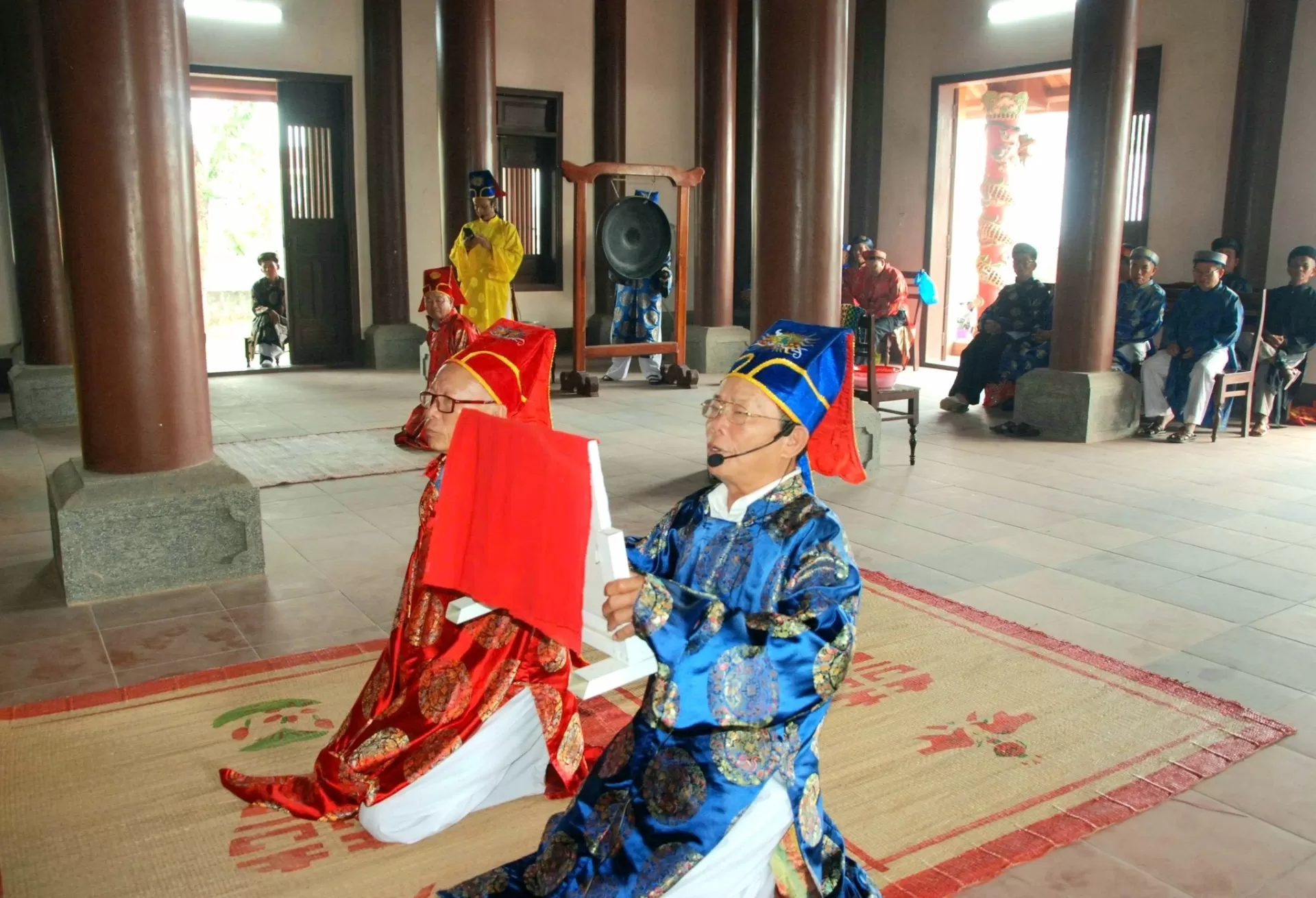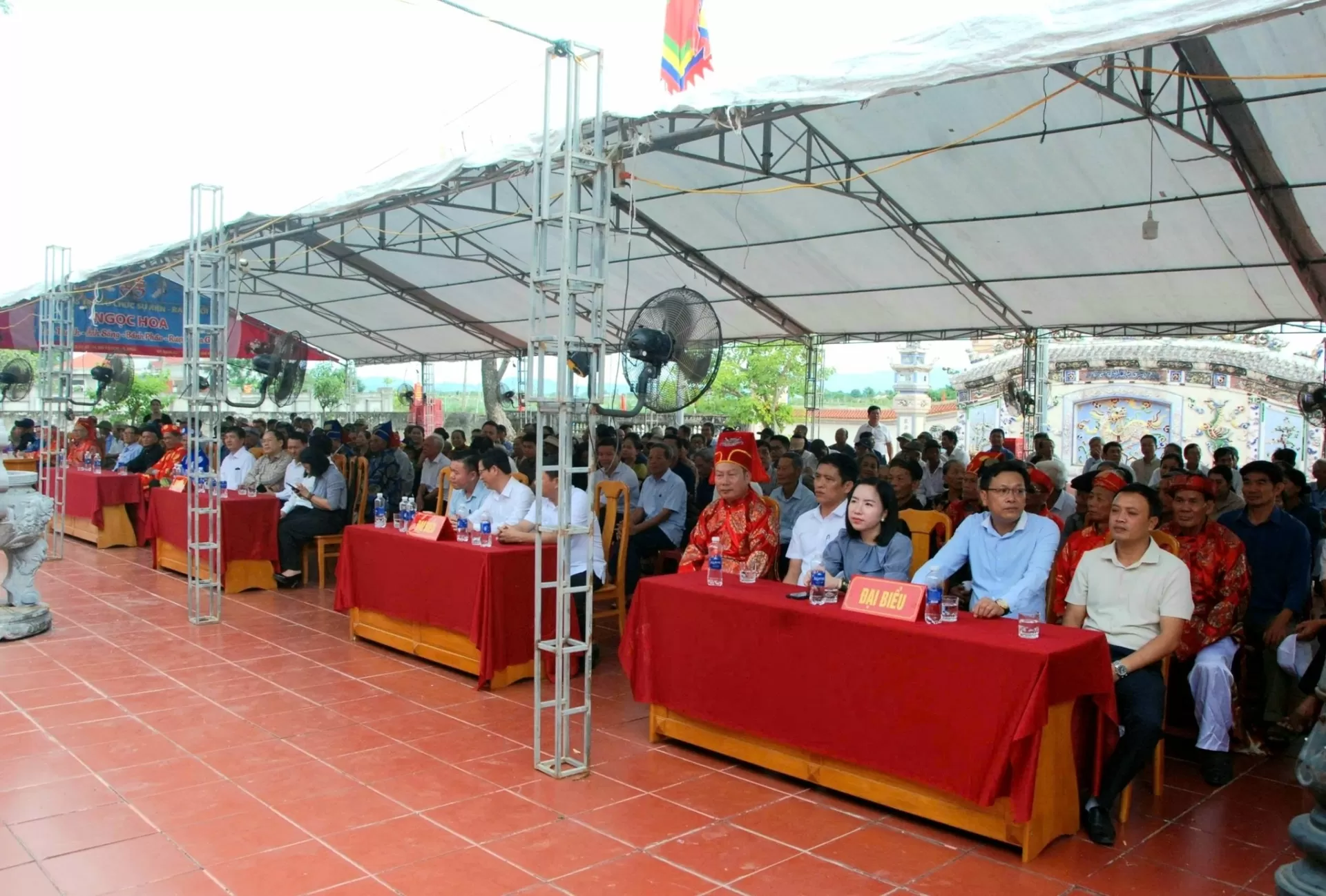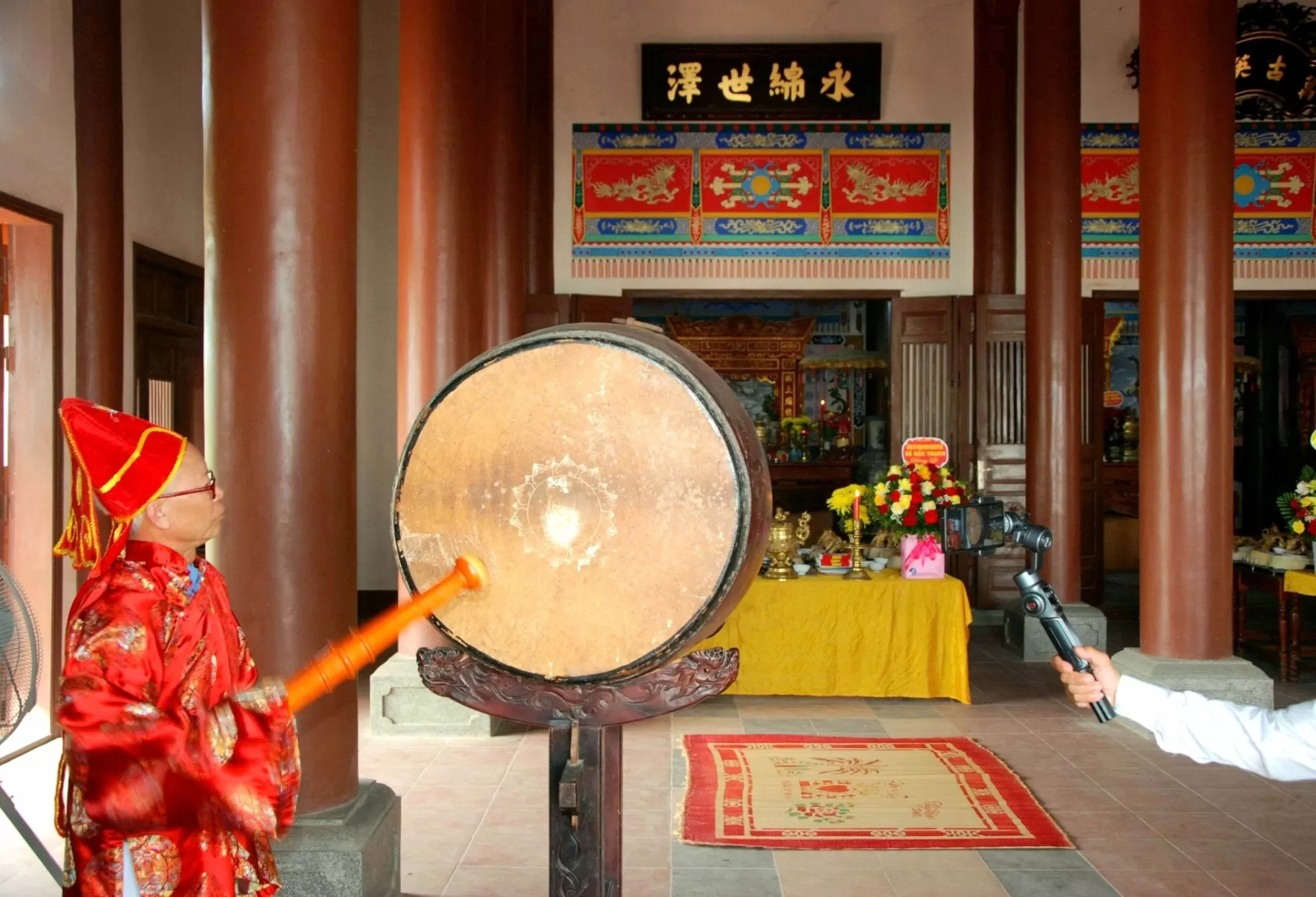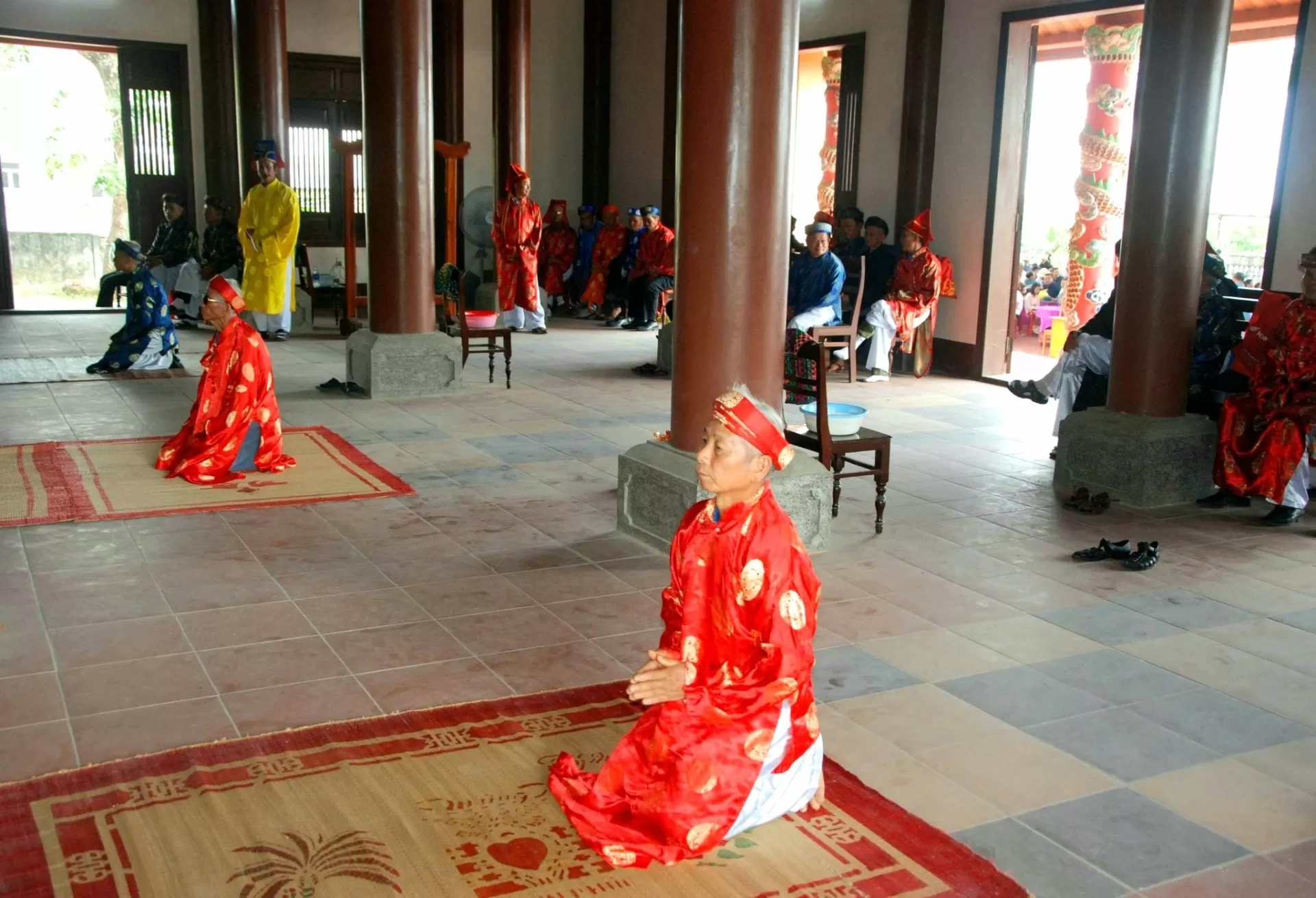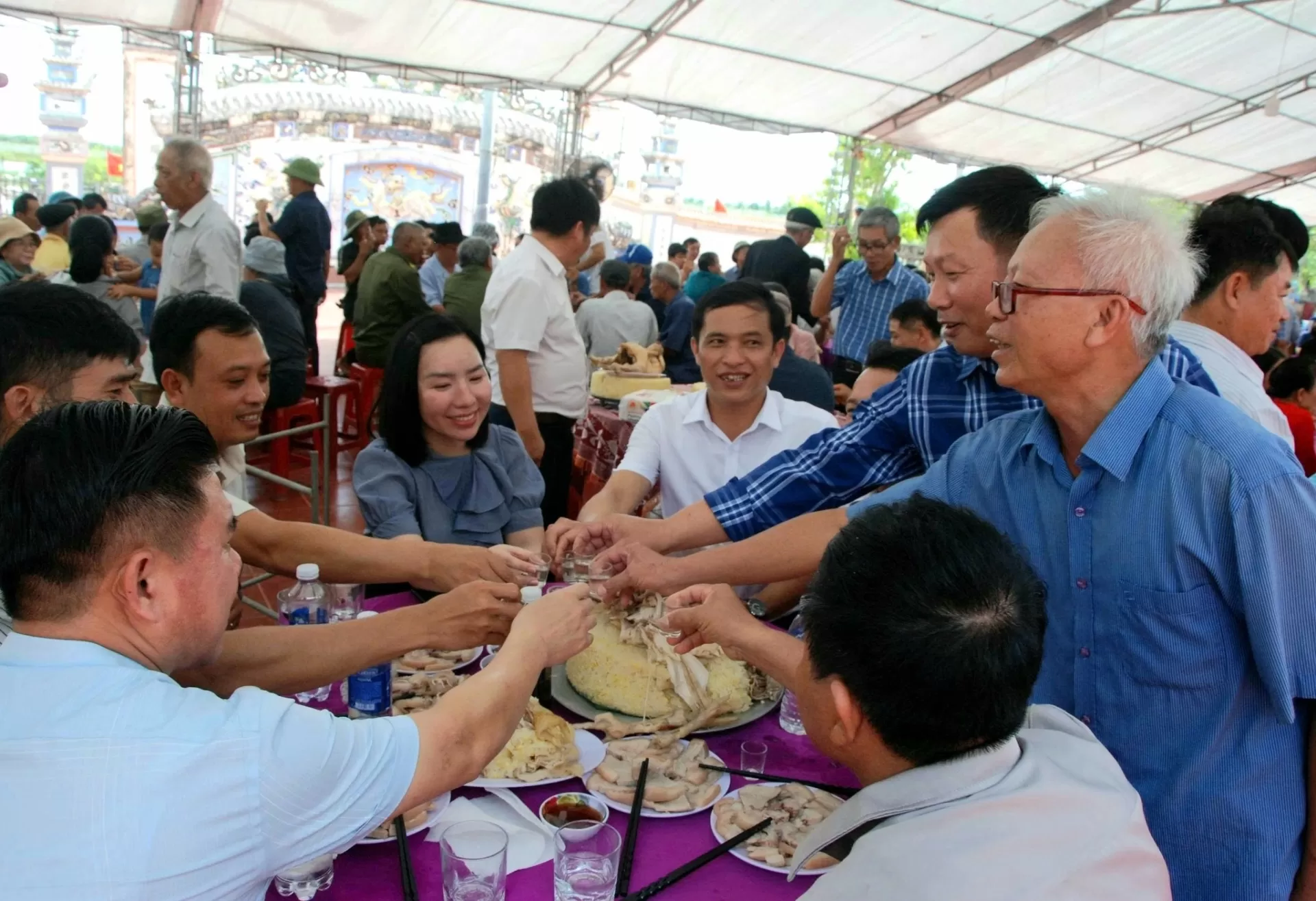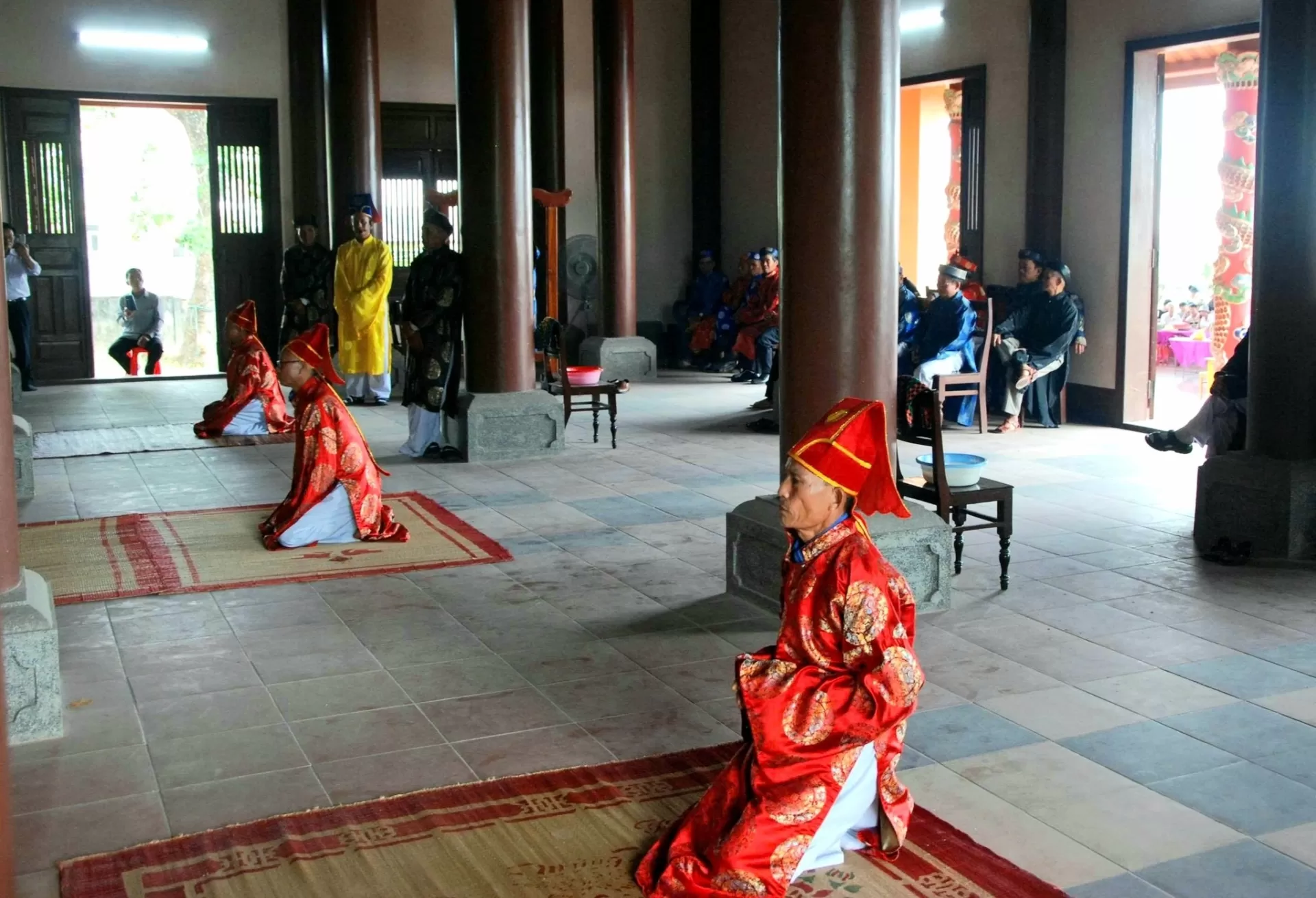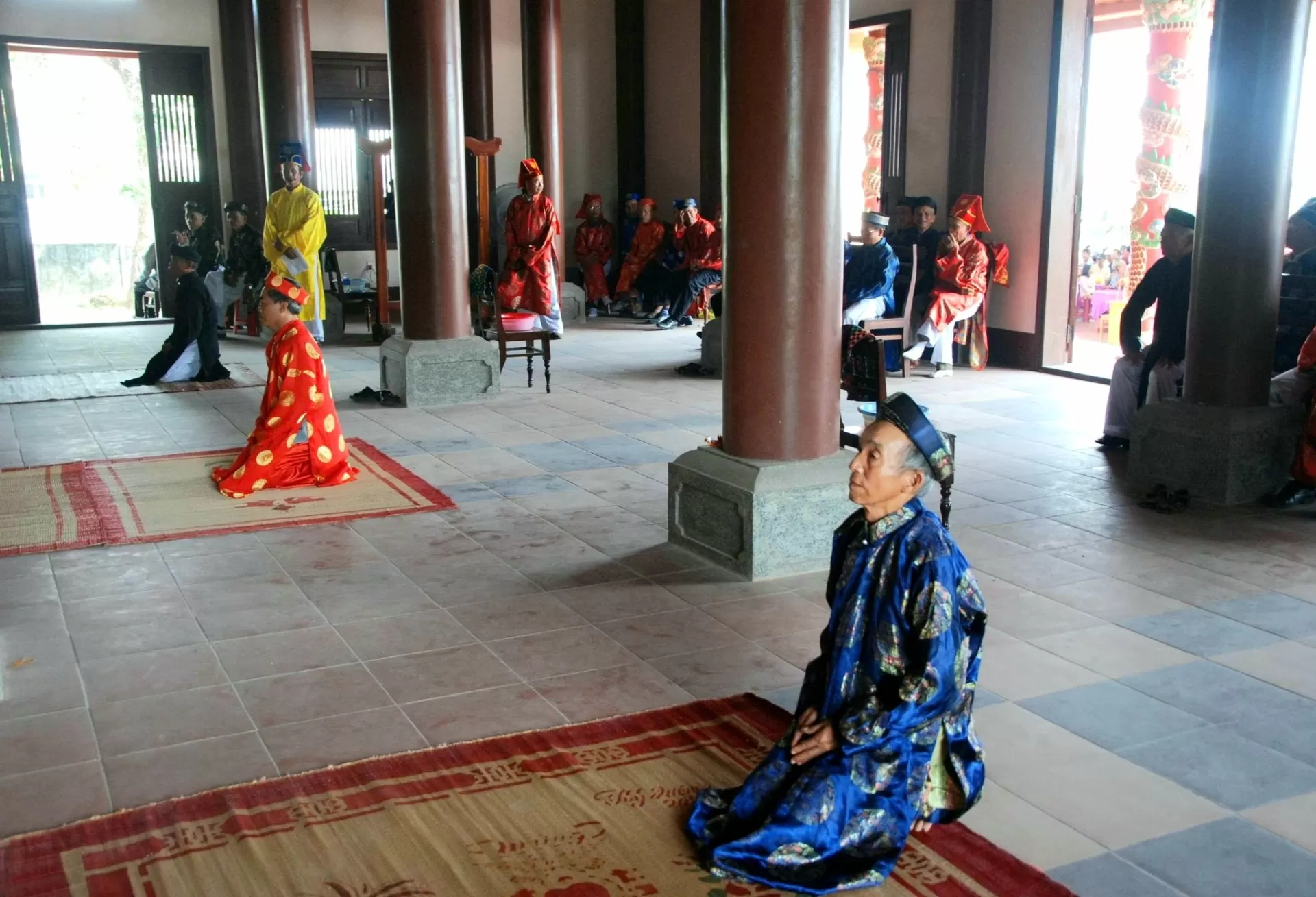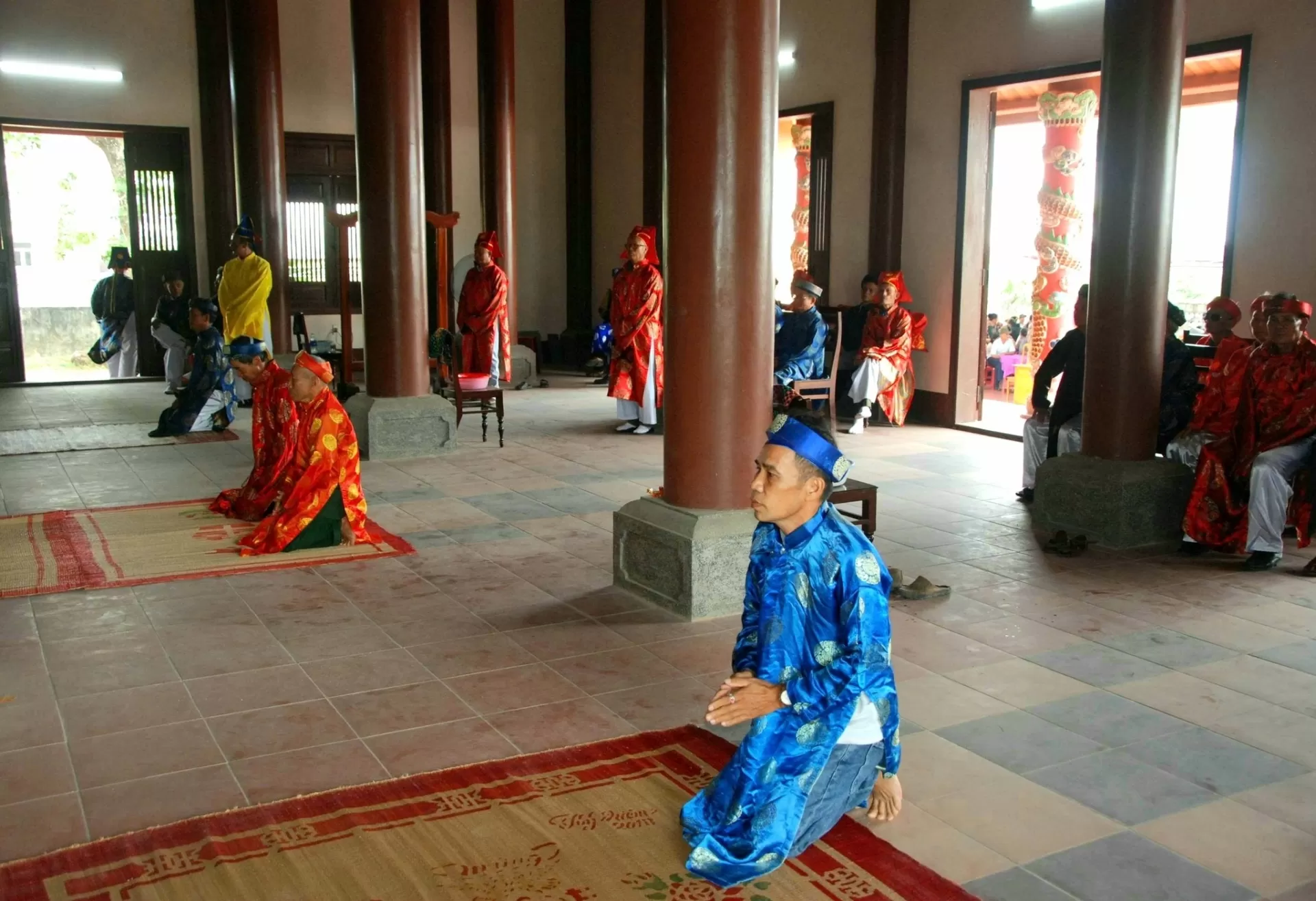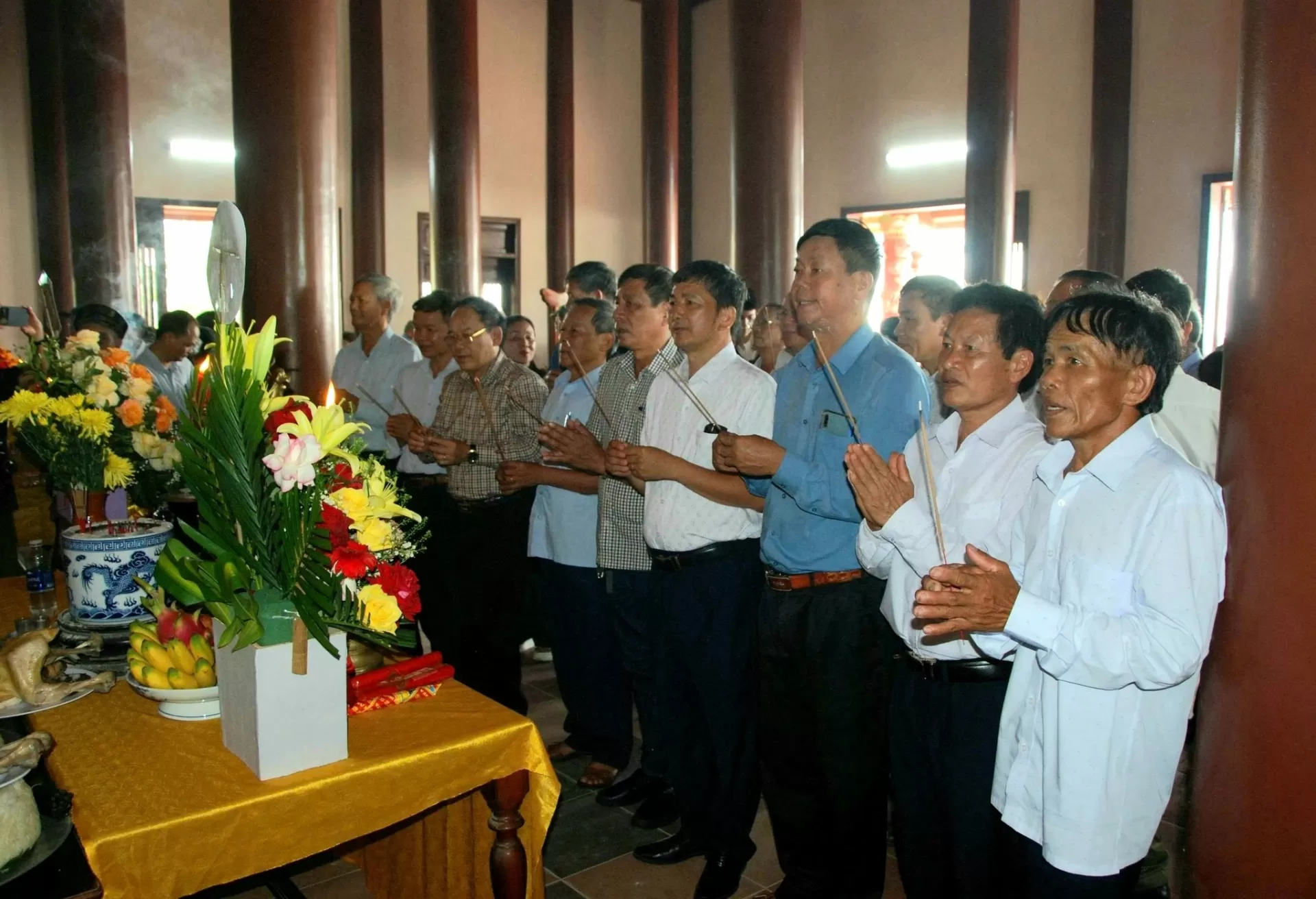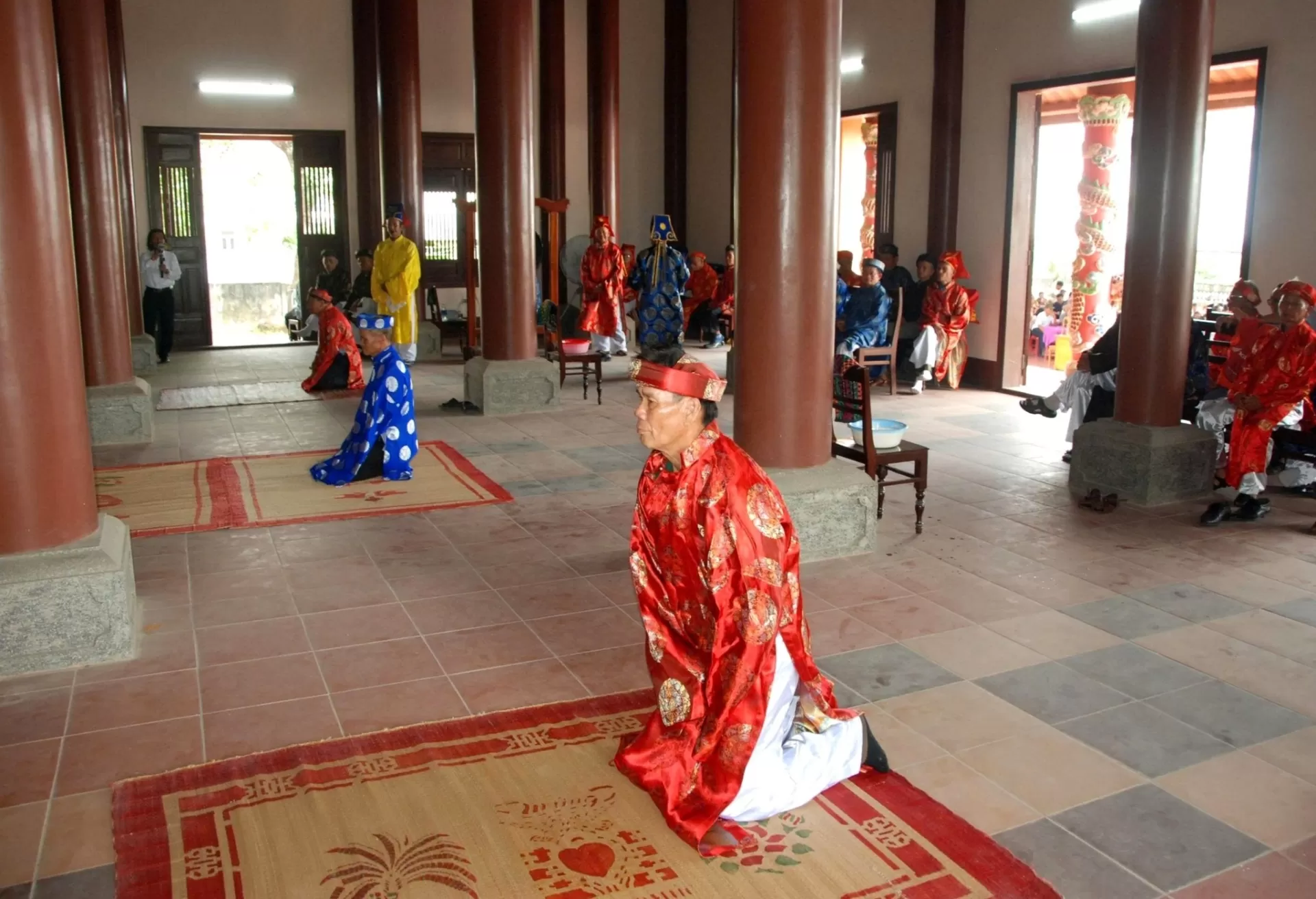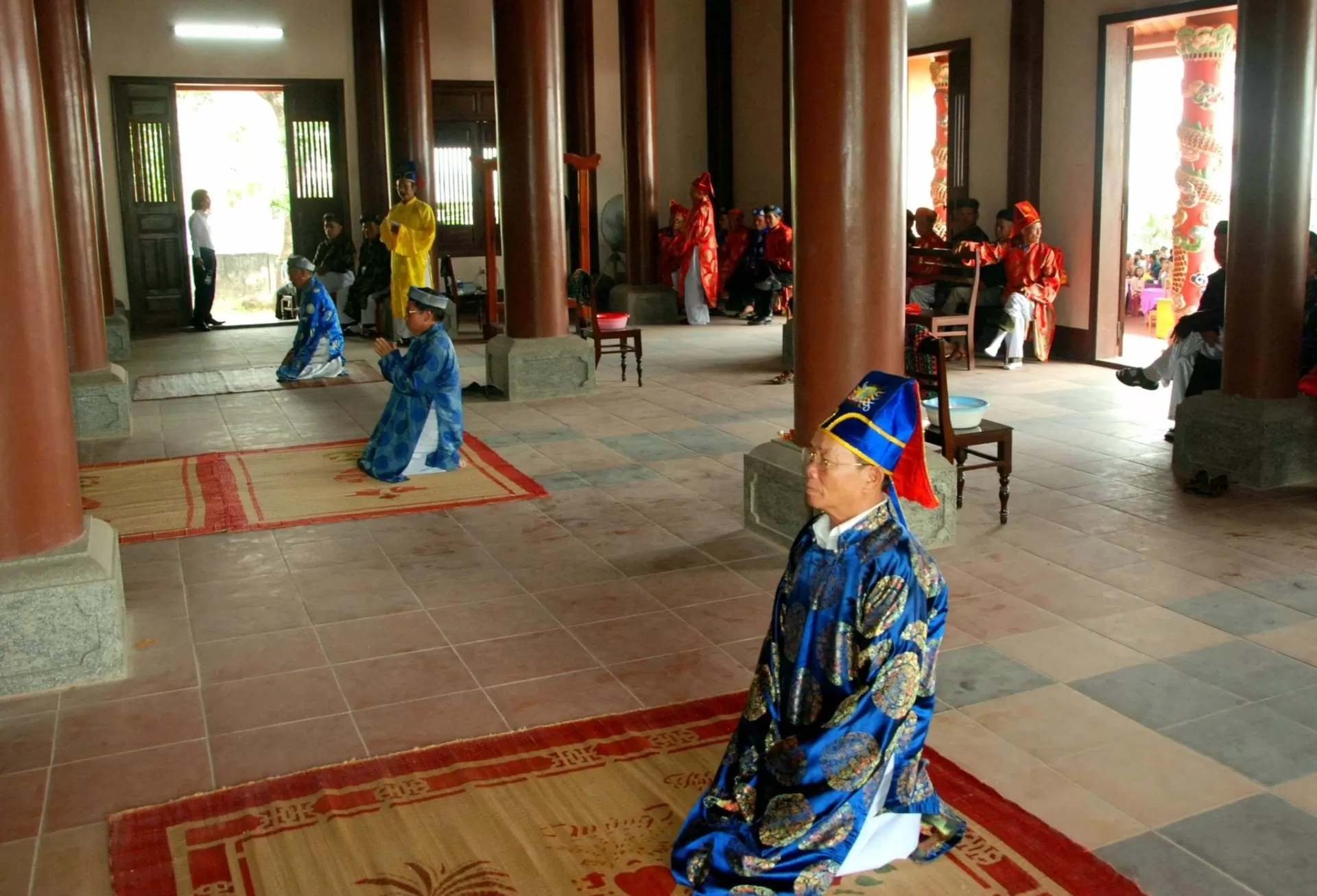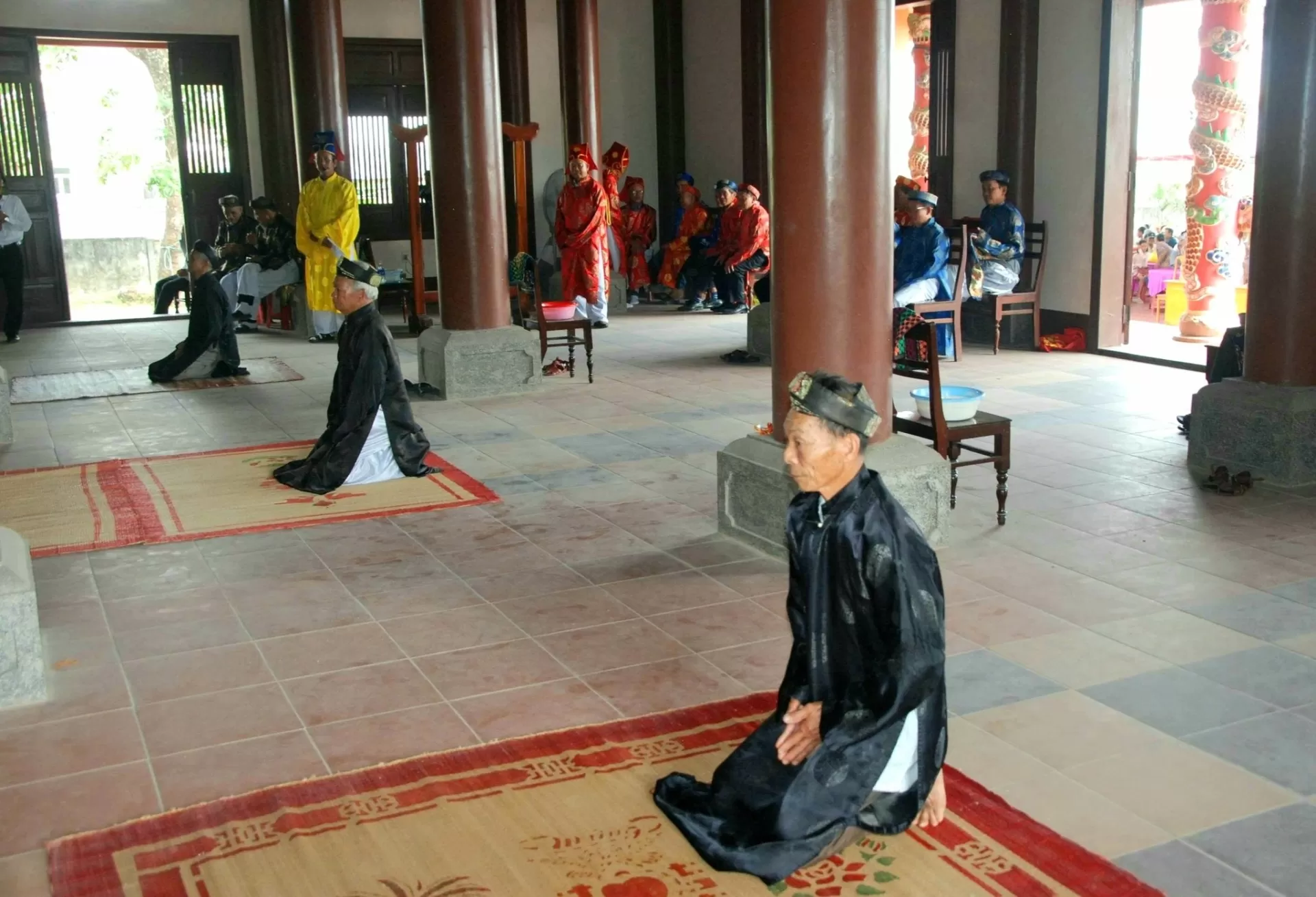1. The Buddhism Pagoda in the Homeland. The pagoda in the homeland is not existent now, it was destroyed in the unknown time, now there is only a desolate ground, called “đất Chùa” (land of pagoda). The Buddhism Pagoda in the homeland was built to the north-west in front of the village.It is said that it was an ancient pagoda.No one knows when it had been built . Years after years it had been deteriorated
In 1941 the pagoda was rebuilt on the former land, sponsored by Mr Luu Trong Du and the villagers.Pagoda was built on a high dry nice and quiet place with many secular trees, such as banian-trees, flamboyants… shadowing through the year.The pagoda was constructed of three- stone wall-compartment with two pantile roofs.The three annular -arched-entrance gate had two gooden door leaves.
The two colossal statues guarding the main gate of pagoda (Mr Thiện (Good) and Mr Ác (Bad))were filled and carved of lime mortar mixed with dodder and molasseson the two walls. Behind the three annular -arched-entrance gate, there was a nice well-proportioned wind -protection -wall (to prevent pagoda f-rom evil air, according totraditional belief), behind a large yard was the antechamber. The pagoda had many buddha statues such as Sakyamuni,Guan Yin, Thousand Arm and Eye-Buddha, Bodhisattva …
There were’nt any monks to take care of pagoda. The pagoda had only a guardian to workship and do all the chores.The villagers of Cao Lao Ha did’nt embrace Buddhism, but they had a high and deep religiousdevotion. They always came and pray the happiness, goodness for themselves and also for all relatives and villagers.
2.The Pagoda in Ho Chi Minh City
The compatriots of Cao Lao Ha who came to Sai Gon before 1945 set up Hội Cao Lao Tương Tế (Lit.The Cao Lao Mutual Assistance Assosiation). Principles of the Assosiation are to helpeach otherinsickness andindistress,encourageeach other ineconomic development, care of theeducation ofchildren, and maintain the traditional fondness for learning f-rom older generations.
The Assosiation also bought a large ground at Go DuaHamlet, Binh Chieu Ward, Thu Duc District to build its own cemetery. Nearly 40 years ago, at the cemetery, the Association built a pagoda to worship Buddha and Ancient sage named Cao Lao Tu.
CaoLao Tu had been renovatedspaciouslybeautifully, and it was inaugurated on November 26th, 2000. Cao Lao Tu is a reuni-on place whe-re all compatriots gatherat the occasions of Tet Holiday, Full moon day, Vu Lan festival ... to offer and worship Buddha, and visit each other to be warmed up in relatives and villagers’ love, showing the fullnuances of an ancient village in a modern city.
Behind thepagoda is the final resting place ( a cemetery) of the olden souls. In order to preserve nuances ofthe homeland, whenever the member dies, the funeral is celebrated as the same at the homeland with all the traditional nuances and full of emotion of the ancient homeland.
The Vietnamese version of this article can be found here. (Xem bản tiếng Việt (tại đây)
